
Gore-Tex is W. L. Gore & Associates's trade name for waterproof, breathable fabric membrane. It was invented in 1969. Gore-Tex blocks liquid water while allowing water vapor to pass through and is designed to be a lightweight, waterproof fabric for all-weather use. It is composed of expanded PTFE (ePTFE), a stretched out form of the PFAS compound polytetrafluoroethylene (PTFE). Gore-Tex products free of "PFC of environmental concerns" repellent coating lacks the ability to repel oil that "Gore DWR" provided.

Gabardine is a durable twill worsted wool. It is a tightly woven waterproof fabric, and used to make outerwear and various other garments, such as suits, overcoats, trousers, uniforms, and windbreakers. It is often associated with the Burberry fashion house and their trench coats. The name is related to "gaberdine", a type of long, cape-like dress worn during the Middle Ages.
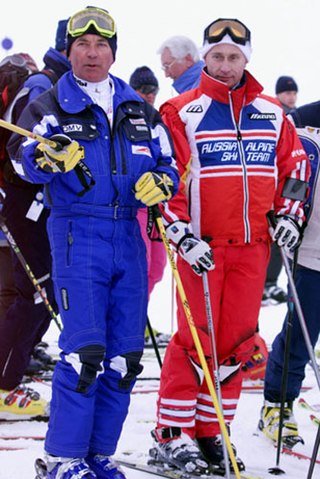
A ski suit is a suit made to be worn over the rest of the clothes when skiing or snowboarding. A ski suit made for more casual winter wear outdoors may also be called a snowsuit and are often used by children as everyday outerwear in the winter season. Some suits are specifically made for snowboarders but most are used by either skiers or snowboarders regardless of the style.
Oilskin is a waterproof cloth used for making garments typically worn by sailors and by others in wet areas. The modern oilskin garment was developed by a New Zealander, Edward Le Roy, in 1898. Le Roy used worn-out sailcloth painted with a mixture of linseed oil and wax to produce a waterproof garment suitable to be worn on deck in foul-weather conditions. Oilskins are part of the range of protective clothing also known as foul-weather gear.

Helly Hansen (HH) is a Norwegian manufacturer and retailer of clothing and sports equipment and a subsidiary of the Canadian retail chain Canadian Tire. Currently headquartered in Oslo, it was previously headquartered in Moss, Norway, from its founding in 1877 until October 2009.
Berghaus Limited is a British outdoor clothing and equipment brand founded in Newcastle upon Tyne, North East England, and now headquartered in nearby Sunderland. It was founded in 1966 by climbers and mountaineers Peter Lockey and Gordon Davison, initially as an importer and distributor of outdoors products. Lockey and Davison's outdoor store in Newcastle upon Tyne, went by the name of the LD Mountain Centre. In 1972 they began designing and manufacturing their own products for sale in their shop. They gave their brand the German name 'Berghaus' which translates as 'mountain house'.

Thinsulate is a brand of synthetic fiber thermal insulation used in clothing. The word is a portmanteau of the words thin and insulate, trademarked by 3M. The material is made by the 3M Corporation and was first sold in 1979. It was originally marketed as an inexpensive alternative to down; at the time, 3M claimed it was twice as warm as an equivalent amount of any natural material.
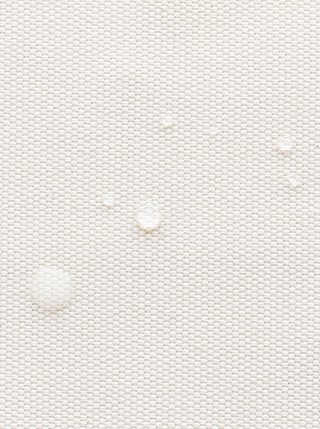
Waterproof fabrics are fabrics that are, inherently, or have been treated to become, resistant to penetration by water and wetting. The term "waterproof" refers to conformance to a governing specification and specific conditions of a laboratory test method. They are usually natural or synthetic fabrics that are laminated or coated with a waterproofing material such as wax, rubber, polyvinyl chloride (PVC), polyurethane (PU), silicone elastomer, or fluoropolymers. Treatment could be either of the fabric during manufacture or of completed products after manufacture, for instance by a waterproofing spray. Examples include the rubberized fabric used in Mackintosh jackets, sauna suits, and inflatable boats.
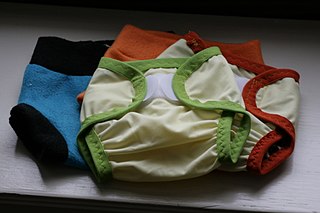
Polyurethane laminate is a compound fabric made by laminating a cloth fabric to one or both sides of a thin film of polyurethane. Polyurethane laminated fabrics have a wide range of applications in medical, automotive and garment uses.

Fjällräven is a Swedish brand of Fenix Outdoor International, specialising in outdoor equipment—mostly upscale clothing and luggage.

Sportswear or activewear is athletic clothing, including footwear, worn for sports activity or physical exercise. Sport-specific clothing is worn for most sports and physical exercise, for practical, comfort or safety reasons.
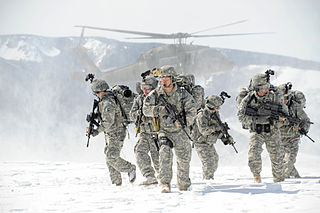
The Extended Cold Weather Clothing System is a protective clothing system developed in the 1980s by the United States Army Natick Soldier Research, Development and Engineering Center, Natick, Massachusetts. The first generation ECWCS consisted of parka and trousers plus 20 other individual clothing, handwear, headwear and footwear items which are used in various combinations to meet the cold weather environmental requirements of the US military. The Extended Climate Warfighter Clothing System, or Gen III ECWCS, is designed to maintain adequate environmental protection in temperatures ranging between −60 and +40 °F.

Regatta is a British clothing brand based in Manchester. It is part of the privately owned Regatta Group, which also consists of Regatta Great Outdoors, Craghoppers, Dare2b, and Regatta Professional. The brand sells through major outdoor retail chains, through its own stores and concessions, and through e-commerce.
Nikwax Analogy is a two-component fabric system for weatherproof clothing based on "biomimicry" of fur.

Mountain Hardwear is a subsidiary of Columbia Sportswear based in Richmond, California that manufactures and distributes apparel, accessories and equipment primarily for the high performance needs of mountaineering enthusiasts and outdoor athletes, as well as for consumers who are inspired by the outdoor lifestyle.

Waxed cotton is cotton impregnated with a paraffin or natural beeswax based wax, woven into or applied to the cloth. Popular from the 1920s to the mid-1950s, the product, which developed from the sailing industry in England and Scotland, became commonly used for waterproofing. It has been replaced by more modern materials but is still used by the country sports community. There are two main drawbacks: waxed fabric is not very breathable, and it tends to be heavier and bulkier than modern synthetic waterproof materials.

Finisterre is an outdoor apparel and surfwear company with a focus on functional and sustainable products. Based in St Agnes, Cornwall, and founded by Tom Kay in 2003, they are recognised as a cold water surf company.
Páramo Directional Clothing is a British outdoor clothing company. It was founded by Nick Brown, who also started the Nikwax waterproofing products company.
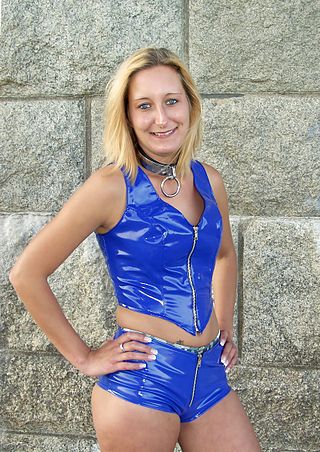
PVC clothing is shiny clothing made from the plastic polyvinyl chloride (PVC). PVC plastic is often called "vinyl" and this type of clothing is commonly known as "vinyl clothing". PVC is sometimes confused with the similarly shiny patent leather.

Galvin Green is a golf clothing brand based in Växjö, Sweden. The company was established in 1990 by entrepreneur Tomas Nilsson. Galvin Green designs and sells multi-layer garments for the game of golf, sold via golf retail stores, on-course shops and authorized online retailers.















